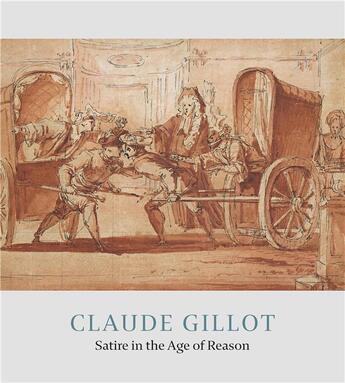-
Date de parution : 03/03/2023
-
Editeur :
Paul Holberton
-
EAN : 9781913645373
-
Série :
(-)
-
Support :
Papier
Résumé:
This scholarly publication presents the work of the designer, painter and illustrator Claude Gillot (1673-1722). The first volume on the artist in English, it accompanies a major exhibition at the Morgan Library & Museum that explores Gillot's inventive and highly original draftsmanship and... Voir plus
This scholarly publication presents the work of the designer, painter and illustrator Claude Gillot (1673-1722). The first volume on the artist in English, it accompanies a major exhibition at the Morgan Library & Museum that explores Gillot's inventive and highly original draftsmanship and places his work in the context of artistic and intellectual activity in Paris ca. 1700. The history of eighteenth-century French art under the ancien régime is dominated by great names. But the artistic scene in Paris at the dawn of the century was diverse and included artists who forged careers largely outside of the Royal Academy. Among them was Claude Gillot. Known primarily as a draftsman, Gillot specialized in witty scenes taken from the Italian commedia dell'arte plays performed at fairground theaters and vignettes of satyrs enacting rituals that expose human folly. The book will address Gillot's work as a designer, painter, and book illustrator, and advance a chronology for his career. Crafting a timeline for Gillot's life and work will clarify his relationship with his younger collaborators Antoine Watteau and Nicolas Lancret. Through an artistic biography and six chapters, each devoted to an aspect of his oeuvre, Gillot's role in developing quintessential rococo subjects is established. We follow Gillot from his start as the son of a decorative painter in the bishopric of Langres to his arrival in Paris in the 1690s, as the city and its secular entertainments flourished apart from the royal court at Versailles. Myriad opportunities awaited artists outside official channels, and Gillot built his career working in the theater and as a painter and designer long before seeking official academic status. His involvement with writers, playwrights, and printmakers helped define his sphere. Gillot's preference for theatrical subjects brought him critical attention, and also attracted talented assistants such as Watteau and Lancret. Gillot came to prominence around 1712 working at the Paris Opéra and as a printmaker and illustrator of books, lending his droll humor to satires. By 1720, Gillot was enlisted to design costumes for the last royal ballet, one of the final projects of his career. He died nine months after his most celebrated pupil, Watteau. The sale of his estate, which including his designs and many etched copper plates, provided material for printmakers and publishers and ensured Gillot's lasting fame among print connoisseurs. His oeuvre as a draftsman and painter, however, was largely forgotten until drawings and canvases began to emerge in the first half of the twentieth century.
Donner votre avis














